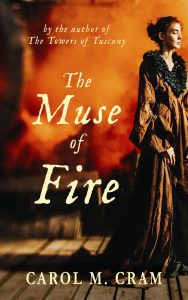Writing and NIA
 I had not consciously connected Nia—a holistic movement practice—with my work as a novelist until Women Writers asked me how Nia inspires my writing. Once I really started thinking about it, I realized that I can credit my Nia practice with helping me both develop and take great joy in my writing.
I had not consciously connected Nia—a holistic movement practice—with my work as a novelist until Women Writers asked me how Nia inspires my writing. Once I really started thinking about it, I realized that I can credit my Nia practice with helping me both develop and take great joy in my writing.
First off, what is Nia? Nia combines dance, martial arts, and mindfulness movement practices to tone the body and transform the mind. Described as “more than just a workout” on the Nianow.com website, Nia addresses the body, mind, emotions, and spirit. I co-teach a Nia class twice weekly near my home on Bowen Island, a 20-minute ferry ride from Vancouver, British Columbia.
I discovered Nia about eight years ago—coincidentally (or maybe not!) around the time I shed my former career as a college instructor and a writer of educational textbooks and embarked upon a full-time career as a novelist. Now that I look back on that time, I realize that Nia and novel writing are inextricably linked. Although I’d maintained a career as a writer of educational textbooks, I longed to write fiction. I had a few novels completed and shoved to the back of dark drawers (what writer doesn’t?), but the terrible truth was that I had pretty much given up on my dream of becoming a novelist.
 Enter Nia. At about the same time that I started working on what was to become my first published novel—The Towers of Tuscany—I took my first Nia class. Within a very few months, I trained as a Nia instructor and found the courage to take back my writing dream.
Enter Nia. At about the same time that I started working on what was to become my first published novel—The Towers of Tuscany—I took my first Nia class. Within a very few months, I trained as a Nia instructor and found the courage to take back my writing dream.
Nia is an extremely rich practice that encourages teachers and students to seek pleasure in movement and to love their bodies. This body-centered approach to moving and living is based upon many principles and practices, but I’ll focus on just a few that I feel directly relate to my writing.
Nia helps me every day because Nia is all about loving your body and paying attention to sensation. How do these two key elements relate to writing? For me, the practice of loving my body translates into trusting the writing process. One of the hardest things I had to learn as a writer was to let myself “suck.” In other words, I needed to give myself permission to get the words down on paper, to love the actual process of writing, and to not judge. Of course, there are days when the words don’t come as easily as I’d like them to, when I get mired in plot problems, or I can’t see my characters for the trees. But when I let go and trust—like I trust that my body will move the way it needs to move when I’m teaching Nia—the words flow, my muscles fire, and I dance at the keyboard and on the dance floor.
What about paying attention to sensation? As writers, we spend a good chunk of our writing days immersing our imaginations in sights, sounds, smells, and feelings. We use our words to conjure up an sensual experience for our readers. As a Nia teacher, I use Nia moves and music to conjure an experience for my students that lets them tap into their sensations.
I can think of many more principles and practices of Nia that relate directly to my writing, but I’ll focus finally on what in Nia we call the Five Movement Sensations: Flexibility, Agility, Mobility, Strength, and Stability. Each one of these movement sensations has its counterpart in my writing practice. Consider Flexibility. Since I’ve been fortunate enough to devote myself full time to writing, I’ve learned to cultivate an attitude of flexibility—to realize that the writing process takes time and that I need to be patient and allow myself “downtime” without judgment to gather my mental forces for another assault on the keyboard. I’ve learned that writing novels isn’t like any other work I’ve ever done. I need discipline, of course, but I also need the freedom—the flexibility—to sometimes stare out the window and know that I’m still “working.”
In movement terms, the second of the movement sensations—Agility—is the ability to stop and start quickly. As a writer, I’ve realized the benefits of maintaining an agile attitude. If a scene I’m writing isn’t working, I give myself permission to skip to a new scene instead of getting bogged down and upset with myself.
Mobility is the act of moving circularly, smoothly, and with ease. As writers, we work diligently to produce stories that appear to glide off the page, that look as if they were written without effort. We know the truth. We know the hours and months and years that go into crafting each phrase, but if we’ve done our job right, our readers move through our work with ease—and hopefully pleasure (another Nia delight).
We need Strength to carry on day after day with this dream of being a working novelist. And Stability? I can think of no other pursuit in my life that has given me more peace of mind—more stability—than the feeling I get when I sit down to write. I am in the right place at the right time doing the right thing with my life. I love every minute of it, even the challenging bits.
Just as my body is central to my Nia practice, my stories are central to my work as a novelist. The more I pay attention to the needs of my body in Nia, the more I get out of a Nia class. The same goes for fiction. When I put the needs of my story first, I find that the tools of our trade—characters, descriptions, research, and plots—fall naturally into place.
Of course, it’s never that easy, but attitude is everything!
—
 Carol M. Cram is the author of The Towers of Tuscany and A Woman of Note, both published by Lake Union Publishing. The Towers of Tuscany received the 2016 Chaucer Award for historical fiction pre-1750 and A Woman of Note won First in Category in the 2016 Goethe Award for historical fiction post-1750. Both novels were awarded Editor’s Choice by the Historical Novel Society in the UK. Carol’s third novel, The Muse of Fire, will be released in late 2017 by Kindle Press.
Carol M. Cram is the author of The Towers of Tuscany and A Woman of Note, both published by Lake Union Publishing. The Towers of Tuscany received the 2016 Chaucer Award for historical fiction pre-1750 and A Woman of Note won First in Category in the 2016 Goethe Award for historical fiction post-1750. Both novels were awarded Editor’s Choice by the Historical Novel Society in the UK. Carol’s third novel, The Muse of Fire, will be released in late 2017 by Kindle Press.
Before switching her focus to writing fiction full time, Carol enjoyed a career as an educator and textbook author. For over two decades, she was an instructor of business communications and computer applications at Capilano University in North Vancouver and facilitated business writing seminars for numerous corporate and government clients.
She is also the author of over 50 textbooks on business communications and software applications for Cengage Learning in the United States. She holds a BA in English Language and Literature from Reading University in the UK, a Post-Graduate Certificate of Education from Durham University, an MA in Drama from the University of Toronto, and an MBA from Heriot Watt University in Edinburgh. She lives on Bowen Island near Vancouver, Canada, with her husband, west coast artist Gregg Simpson.
To learn more about the Nia Technique—a movement practice that has been developed over 35 years—and to find a Nia class near you, check out the website at www.nianow.com
Category: Contemporary Women Writers, How To and Tips






























